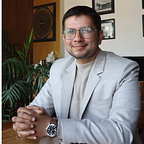Why the Monty Hall problem is fascinating for a statistician?
A few days back, I stumbled onto a problem known as the ‘Monty Hall’ problem. This problem is actually framed off a 1960s TV show called, ‘Let’s make a deal’, where Monty Hall was the host .The problem was simple: You have 3 closed doors out of which 2 doors have goats behind them (yeah, goats) and 1 door has your dream car behind it. You just had to guess which door had your dream car behind it.
So, a contestant has basically a 1/3 probability of getting his dream car if he chooses the right door. The contestant would pick a door randomly (consciously but still random) hoping that he/she would win.
But, here comes the twist.
Monty would open up a door revealing a goat and ask if you would want to ‘switch’ doors or ‘stay’ with the door you picked initially. Me, as a stats guy, clearly see a 1/2 probability for either cases, much like head or tails and would opt to ‘stay’ as it wouldn’t matter. But here lies the fun part. If you were to run this situation and check how many times would you win for both cases (switch or stay) in a simulated environment, the results would come out quite not so easy to digest at a first glance.
The answer to the problem would be to ‘switch’ in order to win in many cases! Running the simulation over and over for more than a million times would decrease the variance of the results and show that switching would work in your favor most of the time.
Still not satisfied with the solution? Let’s make the example case bigger.
Consider now you have 50 doors with 1 door having your dream car behind it and the rest 49 doors having goats behind them. Now you are asked to choose a door and so you choose door no. 1 which, has a 1/50 chance of having your dream car behind it. Then, Monty opens up 48 other doors having goats behind them, leaving only two doors closed. One that you picked, and the another one, the remaining door (say, door number 26). Now would you ‘switch’ or ‘stay’?
I don’t know about you, but in this case I’d switch! The probability concentration of choosing door 26 and it being your dream car seems much higher now although you still have 1/2 probability of winning. But switching would still work better in your favor if the results are observed through multiple simulations i.e. if you run a Monte Carlo simulation on it (the one we did earlier).
